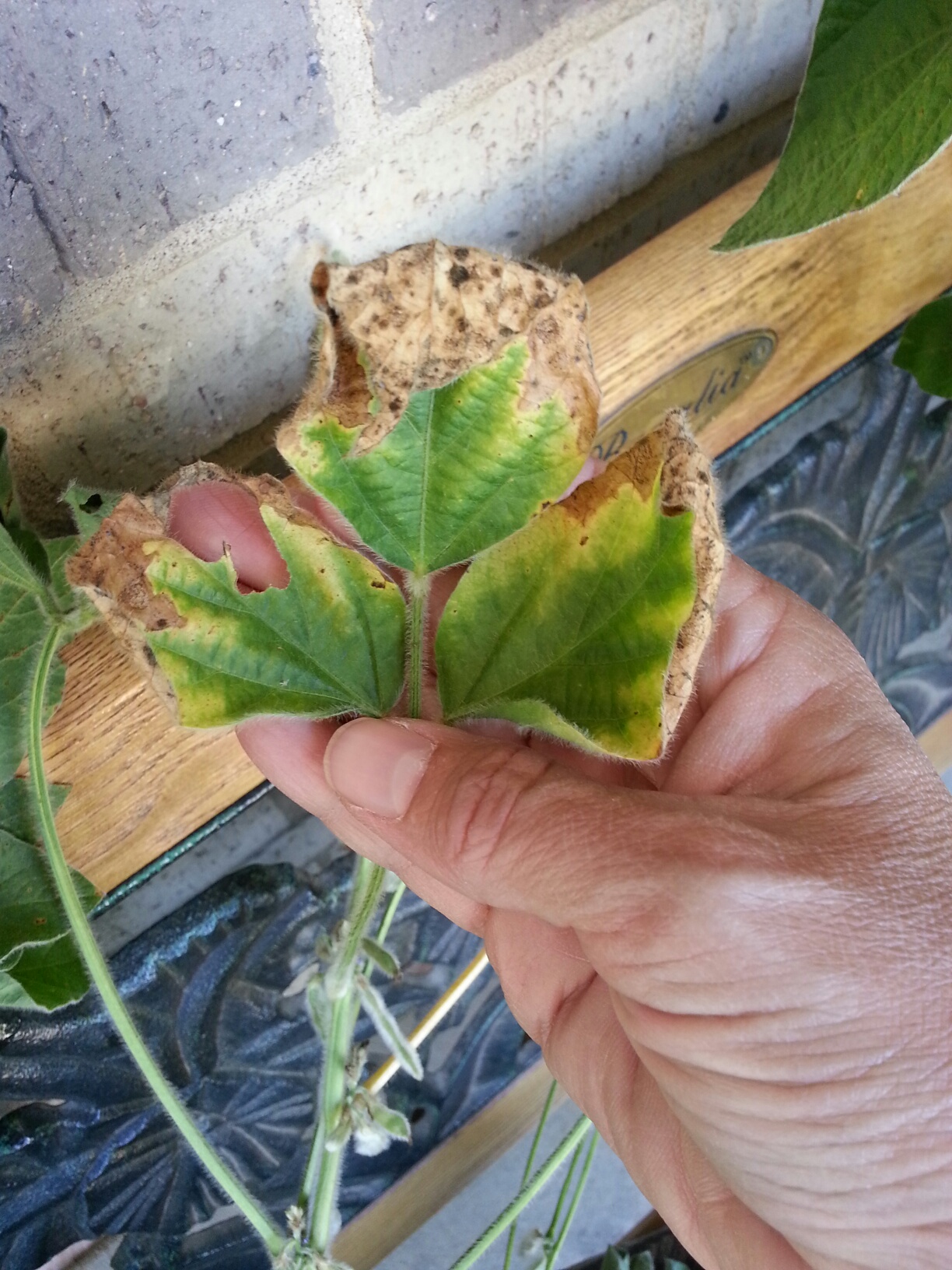By Angela McClure
There are a good number of soybean plants with classic potassium (K) deficiency symptoms showing in the upper leaves. Some fields may also have some Sudden Death Syndrome (SDS) as well, which is a separate issue.
After a little investigating, it appears that the plants are experiencing a K deficiency in the top nodes that is caused by impaired root uptake of K in soybeans that are trying to fill pods (i.e., K demand is higher than roots can supply). Each location may be slightly different as to the cause, but some contributing factors appear to be one or more of the following.
Water-logged root systems, shallow-rooted plants with necrotic root hairs will have a more limited interception of K.
This seems to be more common in low lying areas in fields and bottom fields that have stayed wet through much of the season. Ins one fields, at least 25% of the small root hairs are necrotic from growing in saturate soil conditions, and plants may be shorter than soybeans growing in higher ground.
 |
 |
Soybean Cyst Nematode
Dr. Kelly will be screening a number of samples next week to determine SCN levels, but in some fields we have been able to spot cysts on root hairs with a hand lens. SCN root damage in addition to an already reduced root system in wet soils may be reducing K uptake.
Low Soil Potassium Levels
Fields showing symptoms that have not been fertilized in years may need to have K levels checked. Also, where K was just applied this spring, only 40% to 60% will be available to plants this first season. Where K spread was not uniform, symptoms may look more streaked in the field instead of typical irregular-shaped areas more common to wet conditions.






Post a comment
Report Abusive Comment